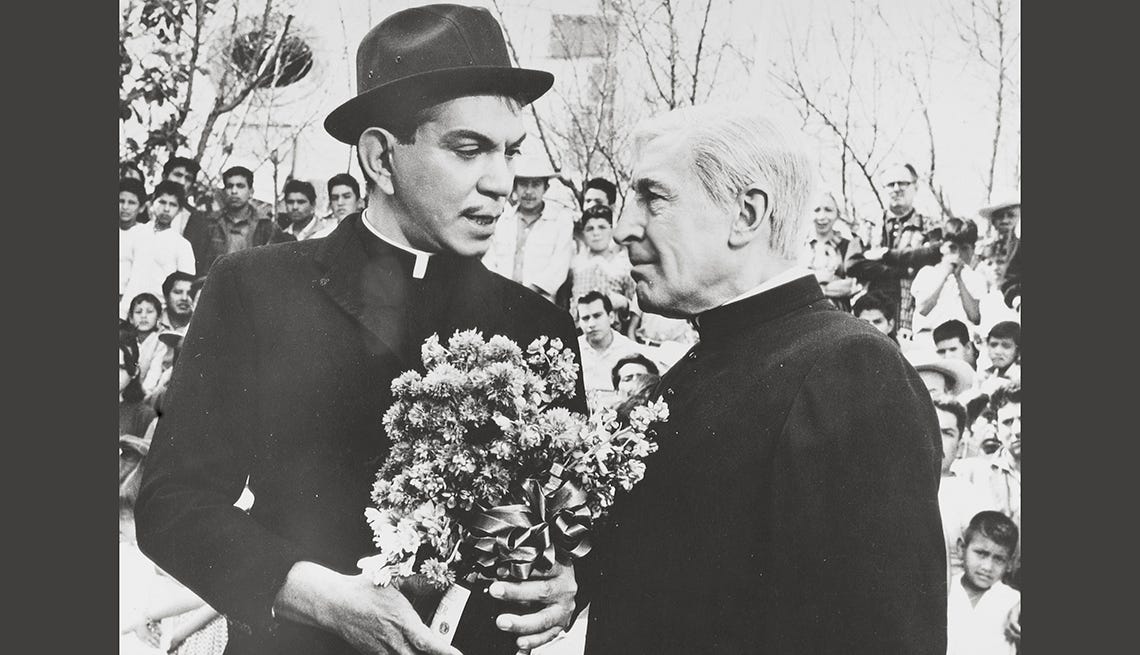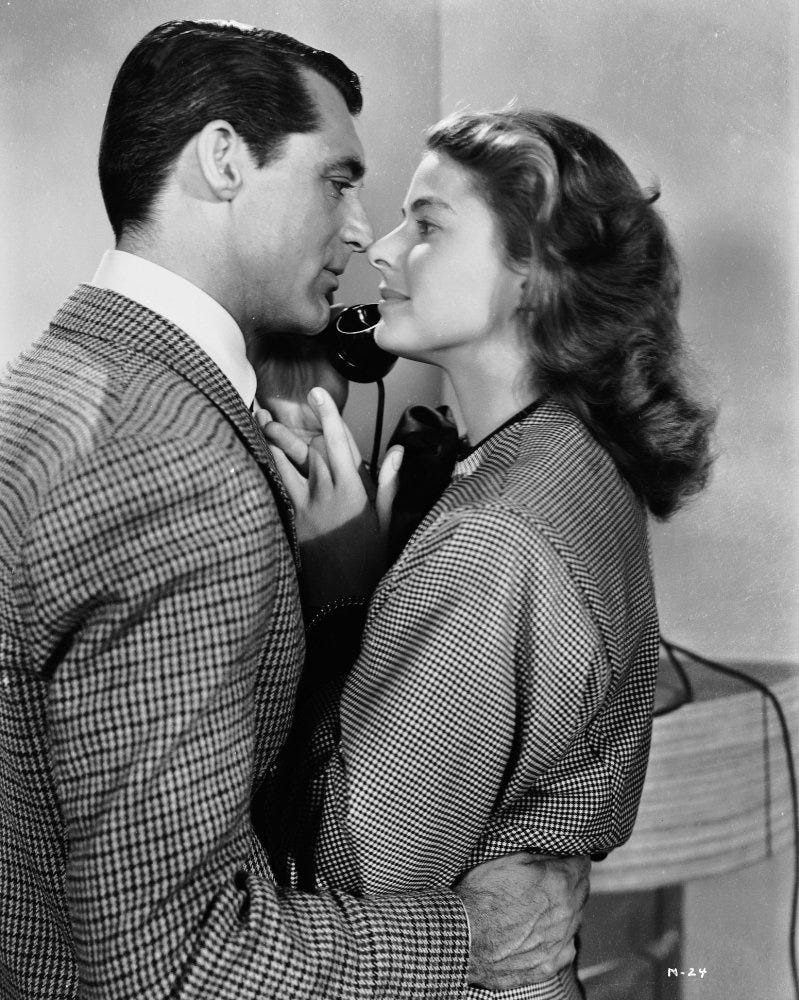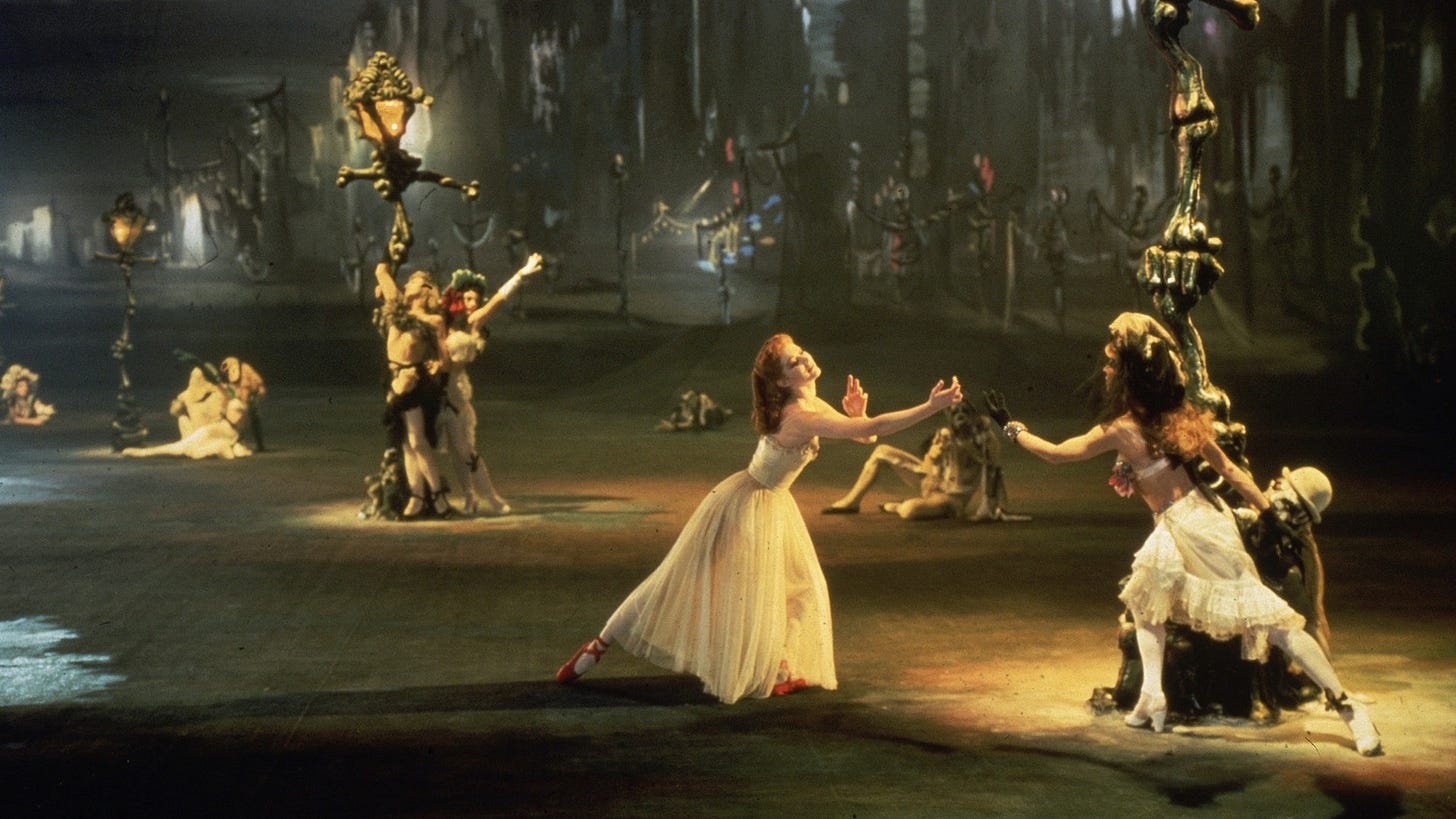
Dear Readers,
Welcome to the very first issue of Finite Cinema Dreams! I’m excited to have you all here. For this first issue, I wanted to introduce myself, and what better way to do that than by sharing with you four of my favorite films? This will give you a glimpse into my tastes, and what type of films you can expect for me to cover in these posts in the near future. So without further ado…
EL PADRECITO (1964)

Once proclaimed by Charlie Chaplin as the best comedian alive and often referred to as the “Charlie Chaplin of México”, Mario Fortino Alfonso Moreno Reyes, known by the stage name of Cantinflas, practically raised me. There wasn’t a day that went by that my parents didn’t have a Cantinflas film on. I have fond memories of watching many of his films during my childhood such as El Bombero Atómico (1952), El Analfabeto (1961), and my dad’s personal favorite, Su Excelencia (1967). His films helped plant the first seeds of my love for classic film. But there is one film of his that has always been my favorite (and my mom’s too): El Padrecito (1964).
Cantinflas often portrayed characters known in Mexican society as pelados, or very poor peasants. However, in this film, he portrays a priest who is sent to a parish where he isn’t welcomed. Slowly but surely through his humor and kindness, he is able to win the hearts of the community.
I believe this film has resonated with me so much over the years because it’s the perfect blend of Cantinflas’ trademark humor, loaded with Spanish linguistic features of intonation, vocabulary, and syntax. It also has slapstick (Cantinflas takes on a bull!), social commentary, and heart. This film also gets brownie points from me because Cantinflas quotes St. Ignatius of Loyola twice, and as a man educated by the Jesuits in High School and College, I appreciate that.
Cantinflas is a comedian, actor, and filmmaker who should be known just as well as Buster Keaton, Charlie Chaplin, and Harold Lloyd. He is a pioneer of Mexican cinema and one of the key figures of the Golden Age of Mexican Cinema. However, lack of accessibility to his filmography outside of Latin America and Spain have kept him from properly being recognized in world cinema. You can find a lot of his films on YouTube, but many haven’t been properly restored and don’t include subtitles. Unfortunately, this is the case with many classics of the Golden Age of Mexican Cinema, but more on that later…
THE RED SHOES (1948)
I wish I could sit here and write some profound story of how I’ve always loved classic film and that I’ve been watching it religiously since I was a kid, but that’s not my story. Though I grew up watching Cantinflas and the occasional classic film/TV show on TV Land, AMC (before it changed its programming), and TCM, there was a large part of my life where I lived without them. Now, that seems almost impossible. If there was one film I can thank for reinvigorating my love and passion for classic film, it’s The Red Shoes (1948). I know, it’s not the most original film to call out because it seems like every filmmaker talks about how influential this film has been to them, but as some of my good friends say, “You gotta live your truth.”
I came across this film through the Criterion Collection, and it was one of my very first purchases from them. I remember on my first viewing being enraptured and intoxicated by the technicolor cinematography of Jack Cardiff and fully immersed in this very dark, macabre story about love, obsession, and artistic expression. I couldn’t believe that a film that old could move me so deeply, and it encouraged me to seek out more classic films. There just really hasn’t ever been a film so far that I’ve watched since that’s affected me quite like this one. It leaves me speechless. So much so that for the longest time, I refused to discuss it with anyone besides recommending it, because I felt that my words could never do justice to the experience of watching The Red Shoes or express the emotions it conjured up inside of me. I still think it’s indescribable.
But I was fortunate enough not too long ago to be invited by my two good friends, McKenzie and Ian, to talk about this film on their podcast, The Criterion Connection. They were wonderful hosts, and I’m forever grateful to them for sharing their platform with me to express my love for this film. After our conversation, I was buzzing for a few days, and I hope you’ll give it a listen (and follow them afterwards!).
I was also lucky enough to attend a screening of this film during the TCM Classic Film Festival (my first one!) this past April, and it’s an experience I’ll never forget. I was so nervous that I wasn’t going to get a seat, that I showed up almost two hours before the screening, and ended up with the first queue card handed out. After the screening, I remember tweeting and texting my friends:
“Speechless. Tearing up. A life-changing moment. I’m soaring.”
This is a film that will always be special to me. Without it, I wouldn’t have fallen back in love with films or think about them as deeply as I do today, I wouldn’t be co-hosting a podcast, I wouldn’t be writing this newsletter right now, and most importantly, I wouldn’t have made some of the friends that I have today. My bank account would also look a lot better without all the physical media and film book purchases, but I digress.
THE APARTMENT (1964)
Is there such a thing as a perfect screenplay? No, but the screenplay co-written by I.A.L. Diamond and Billy Wilder is really close. The film was nominated for ten Academy Awards and won five, including Best Picture, Best Director, and Best Screenplay. It’s also on the Writers Guild of America West’s list of the 101 Greatest Screenplays.
Many reviews, documentaries, and featurettes have often described Billy Wilder as a “bruised romantic”. The term is used to describe this mixture of cynicism and sentimentality that can be found in his films, where he often explored themes of love, relationships, and the darker side of the human condition with irony and wit. If there is a film that encapsulates this the best in his oeuvre, it’s this film.
It tells the story of C.C. Baxter (Bud for short), a minor clerk in a huge New York insurance company, who lends out his apartment to executives as a way to fast-track his climb up the corporate ladder.
I discovered this film early on in the pandemic, and I remember being absolutely blown away by it… and slightly alarmed. It’s uncanny how much of the corporate life Wilder satirizes in this film is still accurate to this day, people-wise. I’m sure everyone reading this has met a Sheldrake in their life.
As I’ve watched this film more and more throughout the years, I’ve found that I really resonate with Bud, played beautifully by Jack Lemmon, and his character arc from schmuck to mensch1.
I feel like many graduating college, myself included, enter the professional workforce with rose-tinted glasses, ready to tackle the corporate world, and make their mark. But often times, it’s not what we expect, and were swallowed up in this gigantic machine and spat out, scarred by experiences that leave us bruised and callous. Not only do I see myself in Bud, but I also see myself in Fran, played heartbreakingly by Shirley MacLaine, who is also bruised and taken advantage of by the same system Bud finds himself in. For that reason, even though there are comedic elements in here, I’ve always considered this a very dark drama, and I’m glad that Jack and Billy are on my side.
But if there’s a silver lining in this film, it’s that we can always start our life anew. Our present doesn’t have to be our future. We just need to have the courage to stand-up to the Sheldrakes of our world, do what makes us happy, and be the change we want to see in the world. From pain and agony, love and happiness can grow. Life is too short not to be happy. I don’t know if this is the message that Wilder intended with this film, but that’s the message that sticks with me each time that I revisit it. It’s now become a New Year's Eve tradition for me to watch this film, and daily I carry a reminder with me to always “be a mensch.”
NOTORIOUS (1946)

I won’t bury the lede here; this is my favorite Hitchcock of all-time. Almost a year ago, I went on a Hitchcock journey and watched all 52 of his surviving films. Though there are many hits (and misses, but it’s all about growth folks!) in his filmography, this is the film that has everything that I love about Hitchcock and the Golden Age of Hollywood. This story has mystery, intrigue, suspense, a dark romance, noir elements2, two beautiful actors at the height of their career, and direction by one of the greatest directors of the period. Not to mention, the script is also penned by the legendary Ben Hecht and has wonderful supporting performances by Claude Rains and Leopoldine Konstantin. As a Classic Hollywood fan, what more could you ask for?
Not only is this directed by one of my favorite directors, it stars some of my favorite actors in Cary Grant and Ingrid Bergman. In the case of Ingrid Bergman, she’s my favorite actress of all-time3. Currently, in my bio on Letterboxd, I have the following statement:
“I’m required by law to give any movie James Stewart or Ingrid Bergman is in at least four stars. I don’t make the rules.”
So if you’re looking for an unbiased take on a James Stewart or Ingrid Bergman film, you won’t find it here. You’ve been warned.
The chemistry between Cary Grant and Ingrid Bergman here is palpable, and the fact that they were such good friends off-screen always warms my heart (especially since Cary Grant’s Devlin is not the nicest guy in this film). I love them so much in this film that I have a beautiful commission piece from artist extraordinaire, Danny Haas, from their iconic kissing scene hanging just above my TV. He’s extremely talented, and I have so many of his pieces. You should definitely check out his work here.
I could go on and on about my love for this film, but I’ll save some of my thoughts for when I eventually do a Hitchcock retrospective. Am I crazy enough to rewatch all 52 surviving films just so I can write about them here? Time will tell. But I’d be remiss if I closed out my thoughts on this film without mentioning the wonderful cinematography of Ted Tetzlaff, along with additional photography by Gregg Toland4. They capture so many brilliant shots in here, but this one takes the cake.
Well, there you have it— four of my favorite films. By no means is this an all inclusive list of my cinematic tastes. There are many more films and genres that I hope to write about here in the near future. But I hope this gives you a general idea of what you can expect from this newsletter and who I am. I promise I won’t talk about myself nearly as much in future posts. However, if you would like to take a glance at more of my favorite films, you can find an ever-growing list here. If there is a film that I didn’t mention here or isn’t in this list that you think I’ll enjoy, comment below or reach out to me through my various social media outlets. I’m always searching for new discoveries, and constantly learning. Besides, you never know, it might be the next film I spotlight in this newsletter.
With this being the first newsletter of Finite Cinema Dreams, I would like to thank some folks who have played a large part in my cinematic journey and in launching this newsletter. First, I’d like to thank the boys of the 70mm Pod—Slim, Proto, and Dany. Thanks for the many laughs you’ve provided over the past few years and for sharing your passion for film with the world on a weekly basis. I honestly don’t know what I’d do without your podcast or the caring community of “film luvvvers” you’ve fostered, whom I also owe thanks. Lastly, I’d like to thank my friends, Ismael and Ron, for their support. Recording the Reel Latinos Podcast with you all is the high point of my week, and I couldn’t think of better individuals to highlight Latin American films and filmmakers with on a weekly basis.
As Dr. Dreyfuss, played by Jacob Kruschen, explains to Bud in his apartment, “…a human being!”
Ok, some table setting here. We can argue until we’re red in the face whether noir is a style or a genre, and many historians and critics have, but I’m not going to do that here. For purposes of this newsletter moving forward, I’m in the camp that it’s a style.
Though, I’ll admit that the more Barbara Stanwyck films I watch, the closer she gets to taking that title. Maybe I’ll just say it’s a tie for now.
That’s right, the man who shot Citizen Kane, The Grapes of Wrath, The Best of Year of Our Lives, and so many other great films.






Fantastic stuff! Really excited for what’s to come
I think this is a sign for me to finally watch The Red Shoes 🙂